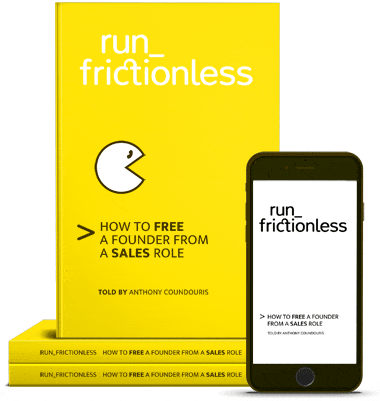
Agile + the 4Qs. A mashup of two awesome frameworks.
>
Agile + the 4Qs. A mashup of two awesome frameworks.
Business owners are aware of the benefits 🎓 of Agile, and a few know about the power 💪 of the 4Qs. What you may not be aware of is how useful it is to mash the two frameworks together. Today we are presenting how business owners can mashup Agile and 4Qs frameworks.
Welcome, Wouter Delbaere 🙏 .
In mid-2020, Wouter Debaere collaborated 👏 with run_frictionless to design a mashup of the Agile and the 4Qs frameworks. Wouter is going to teach us how it’s done, and in a moment show us four ways we can mashup Agile and the 4Qs.
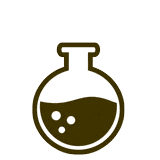
This article is an overview of our podcast together titled Agile + Scrum mashup with the 4Qs. Listen to Wouter’s explanation first-hand.
Here is what Wouter Delbaere’s Agile mashup with the 4Qs looks like. I’ll let Wouter explain how his mashup works. To kick-off, let’s introduce what the 4Qs and Agile are about. That way, we are all on the same page.

AGILE IN 30 SECONDS
Agile is an iterative approach to software development. The objective of agile is to maximize the 💰 return on investment and achieve a return as quickly as possible. A more traditional approach, also referred to as a ‘waterfall’, applies font-loaded predictive planning, and a sequential flow. Real working 🔒 software does not appear until late in the project.
4Qs IN 30 SECONDS
The 4Qs is a decision-making framework designed to help founders and sales teams 🏆 scale a business. Quadrant 1 addresses whom we serve. The remaining three Quadrants deal with what we are serving the customer, what we share in common with the customer, and how we serve the customer.
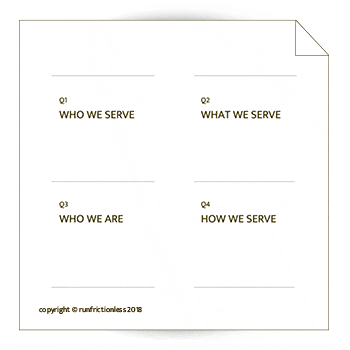
q. does agile relate to scrum?

Agile is basically a set of generic principles, while Scrum is a concrete way ☝ of implementing these principles via a specific set of rules. While Scrum is the most popular manner of adopting Agile, there are other methodologies. For instance, Kanban and Extreme Programming.
q. what roles of agile mashup with the 4qs?

To understand how Agile can mashup with the 4Qs, you need to understand two of the three roles of Agile. They are the product owner and scrum team.
The product owner is responsible for return-on-investment. They have the vision 😇 for the product (what), and understand the customer problem it solves (why). They prioritize features according to the value each feature creates. The product owner should not be confused with the project manager. How the project is tasked and delivered is the responsibility of the scrum team.
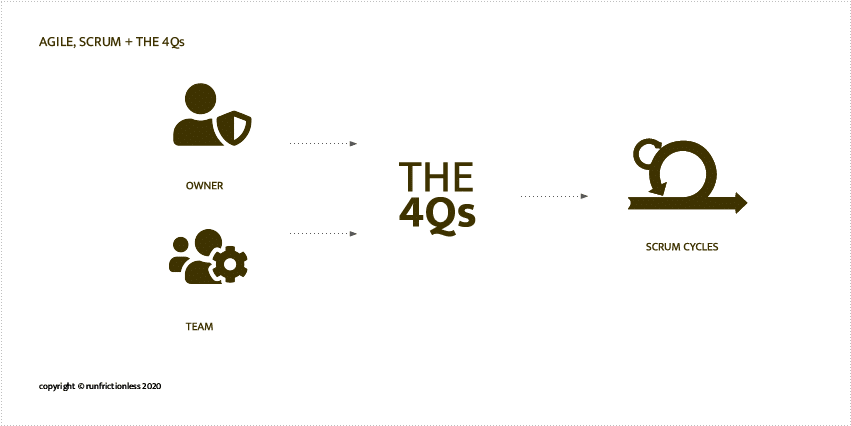
The team is responsible for how the product gets built. They have a high degree of autonomy and are accountable for how the product and its adjacent services are delivered. Within the scrum team, there is no project manager. Teams are self-organizing.
The last role which is important to Agile, but not important to our mashup is the scrum master.
q. what is your impression of the 4qs?

After a few minutes of talking about the 4Qs, my intuition told me there was a strong alignment between the 4Qs and Agile. Reading the book run_frictionless solidified my thinking.
For me, Quadrant 3, Who we are, particularly resonated. I realized that the concept of a shared belief is so fundamental, that I decided to change my approach for my next adventure. I want to get a shared belief right first and foremost.
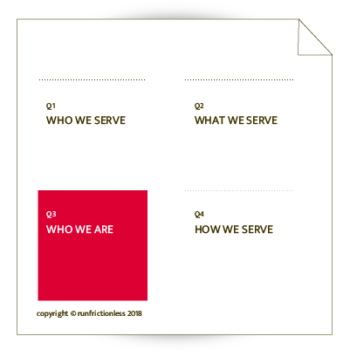
q: why should we mashup agile with the 4qs?

The two frameworks cover different aspects of a business. Together, they make a very neat package.
The 4Qs is a holistic framework for overall business success. It addresses four fundamental questions: Who to serve, What to serve, Who we are, and How to serve. Agile is a specific approach to software development, designed for agility.
The two frameworks are ✌ complementary and allow for simultaneous 👍 adoption. Where they overlap, the frameworks reinforce each other. Where the scope is different, the 4Qs 💥 drive Agile execution.
q: can you think of four ways the 4qs can drive agile?

Yes, I can think of four ways that the 4Qs can drive the execution and adoption of Agile. Here they are.
01 BEST PRACTICE
The first practice is to make the product owner responsible for matching the customer’s problem with the product, not salespeople.
This defies most organizational design, which places 🤫 sales directors as the Quadrant 1 custodian. Making the product owner the custodian of both Quadrants will give them first-hand intel and get the organization to a 👍 Q1-2 fit faster.
The product owner is responsible for matching the customer’s problem with the product. This is because the product owner is accountable 🤑 for return on investment. To drive Agile, make the product owner 👏 custodian of Quadrants 1 + 2.
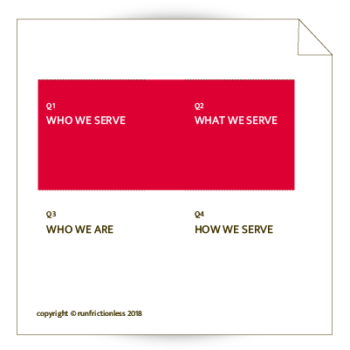
02 BEST PRACTICE
Allow product development to be guided by the shared belief of the company.
Quadrant 3 canvases shared beliefs. Quadrant 3 encourages 🔔 founders and CEOs to establish and share the belief. If the team does not 💔 share the belief of the CEO, the effectiveness of agile is undermined.
Product development must be guided by the shared belief of the company. The quality 🌟 of product development varies depending on how well the beliefs are shared. The product owner is not solely responsible for beliefs.
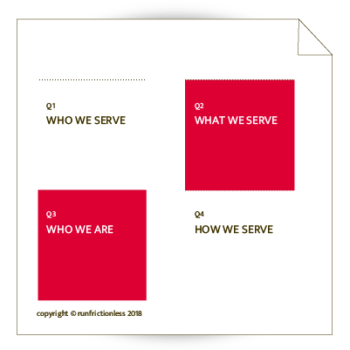
03 BEST PRACTICE
Make the scrum team responsible for customer experience, not the product owner, and not marketing.
In most organizational design, the marketing director is the Quadrant 4 custodian. However, to drive agile 👌 practices, the scrum team are custodians of Quadrant 4. Quadrant 4 includes every interaction required to create a customer.
The team is responsible for the customer experience. Agile decrees that the scrum team possesses a high degree of accountability and autonomy over ‘how’ the product is delivered to a customer.

04 BEST PRACTICE
Keep sprint cycles short and improve the agility of the business.
Shorter sprint cycles equate to greater agility for the business. The shorter the sprint, the faster intel 🎓can be gathered and acted upon within each Quadrant.
The 4Qs drives Scrum by encouraging product owners to program tasks sequentially, and keep tasks to 1-2 weeks. Some cycles will drive down 💪 more friction than others. The more improvements made in a six month period, the greater the chance that 🛍️ sales will improve.

UNEXPECTED RESULTS OF WOUTER’S AGILE 4Qs MASHUP
Wouter’s Agile mashup with the 4Qs uncovered three startling revelations. If you are thinking of implementing Wouter’s mashup, I advise you to digest these three. They caught me 😲 by surprise!
Product owners have two ✌ responsibilities and the team has only one responsibility. They are custodians of both Quadrant 1 and Quadrant 2. This is because the product owner is accountable for return on investment. In other words, they are responsible for reaching a Quadrant 1-2 fit.
The product owner also addresses who not to serve. An organization has limited resources. In order to optimize limited budget and resources, the product owner specifies who the organization will not serve, and sets a priority of who to serve today and who will be served tomorrow.
Neither the product owner nor the scrum team is directly responsible for Quadrant 3 ‘Who we are’. Quadrant 3 is 🙌 shared. Like any person in the organization, the team and owner have equal opportunity to ‘share’ the belief. However, only the founder or CEO of the company should establish a belief.
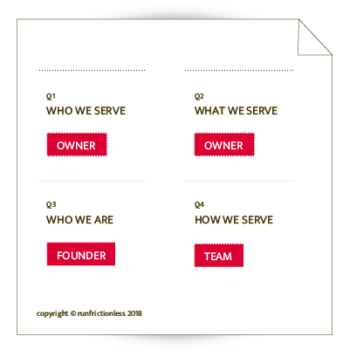
A danger of hiring a scrum team based on technical first, and shared beliefs second, is the organization must buffer technical people against Quadrant 1. Here, the product owners reach a Quadrant 1-3 fit, but the scrum team does not. Agile cannot be executed properly if the scrum team does not share the beliefs of the organization.
Quadrant 4 ‘How we serve’ is not under the control of the product owner, but instead is the responsibility of the scrum team. Quadrant 4 defines ☝ every interaction required to create a customer.
One way to increase a scrum team’s first-hand experience with Quadrant 1 (who we serve), is to assign them an interaction from Quadrant 4. They could be responsible for conducting a product demo to prospects. Or perhaps they are taking support questions from customers. Either way, it gives the scrum team exposure to customers so they make more informed product decisions.

get started
using the
4Qs
4Qs SLIDESHARE RESOURCES
OTHER FREE RESOURCES
ACKNOWLEDGMENTS
Wouter Debaere is a FinTech entrepreneur with 15 years of experience in information technology. Wouter has run a RegTech business, looking after 200 banks as clients across 10 Asia-Pacific countries. Outside of work, Wouter enjoys triathlon and coaching.
Key takeaways

run frictionless
now for only US$995





